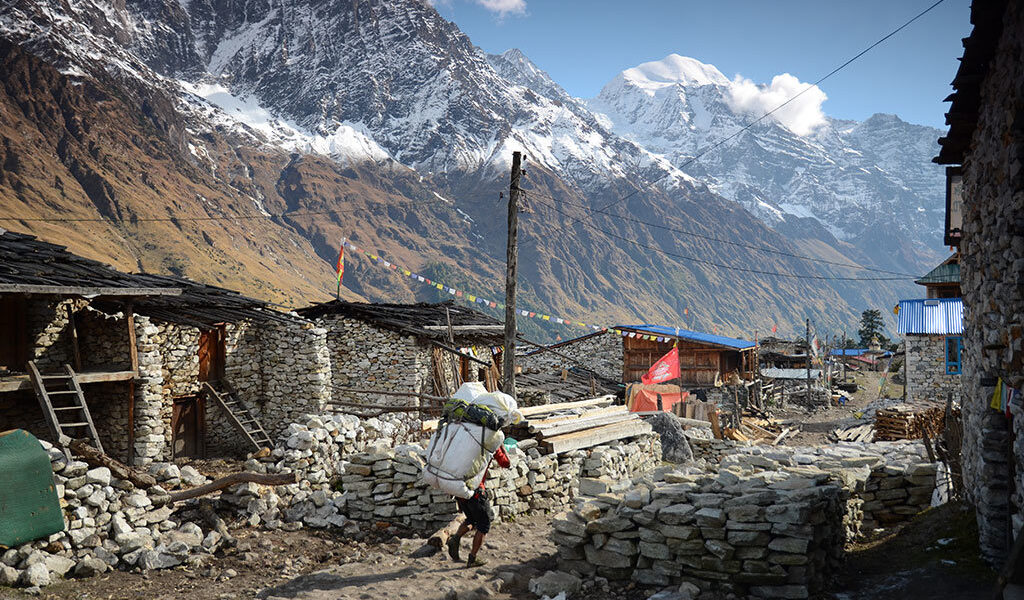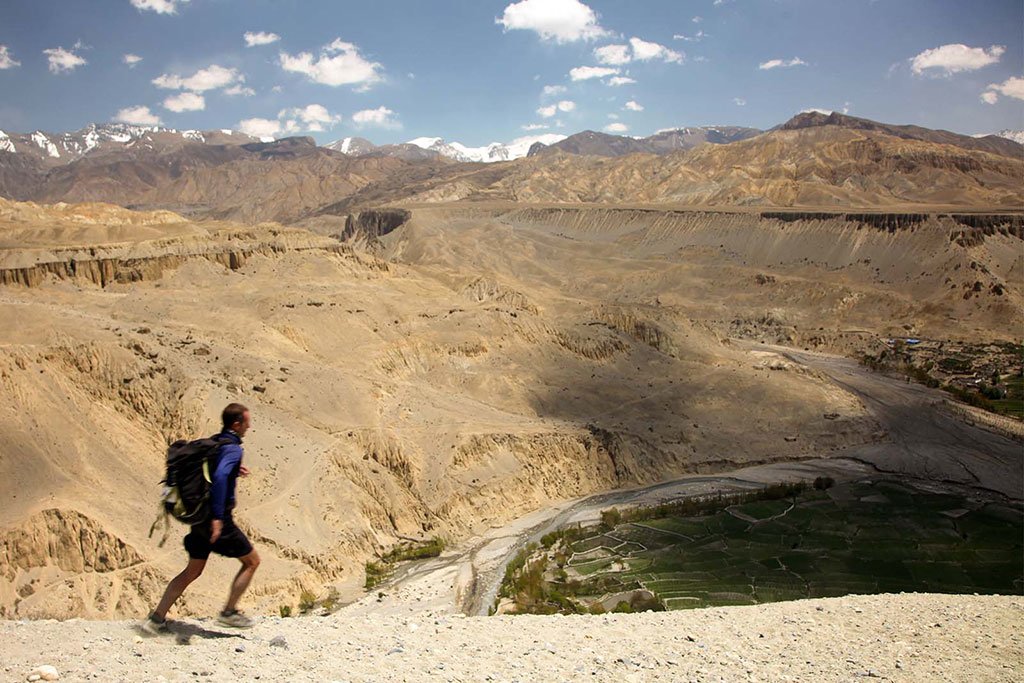
Richard has been living and working in Nepal for the last seven years, and is a major force behind the trail running scene and the opening of the Manaslu Circuit as a teahouse trek. We caught up with Richard not long ago to learn more about how these initiatives gained traction.
Could you please provide a brief introduction about yourself, detailing your journey to living in Nepal, and the circumstances that led you to immerse yourself in the worlds of trekking and trail running?
For a fulfilling seven years, I called Amsterdam home. Life there possessed a certain undeniable allure. The city operates with an almost flawless level of organization, and adherence to the established rules ensures a smooth and agreeable existence. However, a yearning for a new horizon, a novel challenge, and a fresh professional endeavor began to stir within me. I made the decision to take a sabbatical, a precious few months dedicated to introspection, and embarked on a journey to Kathmandu. This wasn’t my first encounter with Kathmandu; I had visited the city twice before, finding it to be the ideal setting for contemplation and strategic planning. Kathmandu, with its relatively low cost of living, provided an affordable backdrop for the kind of self-reflection I sought.
After spending approximately five months in Kathmandu, the city began to weave its magic. I forged connections with individuals from diverse backgrounds and initiated a number of stimulating projects. These early projects sparked a passion for the region that I could not ignore. After several return trips to Europe, I found myself drawn back to Nepal, and I have now resided here for seven enriching years. Though, I must admit, the tranquil atmosphere of Amsterdam occasionally tugs at my heartstrings. Nepal, however, remains an incredibly captivating country, especially for someone observing from an outsider’s perspective. A significant portion of life here operates according to a distinct set of codes – religious beliefs, political ideologies, business practices, and the dynamics of power. It has been an incredibly fascinating experience to gain even a rudimentary understanding of how life functions within this intricate tapestry.
My initial foray into the world of trail running in Nepal was sparked by a post I encountered on a forum, a forum that I had actually launched myself called Kathmandu Kathmandu. The post detailed a challenging 70km trail running race. This initial spark led to a valuable friendship with a like-minded individual. Together, we dedicated our efforts to promoting the sport of trail running within Nepal, working to increase its visibility and accessibility. My introduction to the breathtaking Manaslu Trek came about through Dhir, a visionary individual who was organizing a multi-stage race along the route. Dhir was also instrumental in developing the infrastructure to support trekkers. He was in the process of constructing a tea-house, a project that would transform the Manaslu Trek into a tea-house trek, eliminating the necessity for trekkers to carry their own tents and camping equipment. Furthermore, Dhir was committed to improving the quality of services available to tourists by conducting training courses in cooking and hygiene for the local community. Inspired by his dedication, I decided to offer my assistance, collaborating with Dhir and the local hotel owners to create a website. The purpose of this website was to inform the world about the wonders of the Manaslu Trek and to emphasize that it could be undertaken without the burden of camping. At the time, the majority of online resources still incorrectly characterized the trek as a camping-dependent experience.
In comparison to other popular treks, such as the Annapurna Circuit or the Everest Base Camp trek, does the Manaslu Circuit trek experience a comparable level of tourist traffic?
Gaining access to precise and up-to-date figures from my current location can be challenging, but based on my observations, I would estimate that the Manaslu Circuit trek receives approximately 3,000 to 4,000 visitors annually. The majority of this traffic is concentrated during the peak trekking seasons, typically in the spring and autumn months when weather conditions are most favorable. To put this into perspective, the Manaslu Circuit sees roughly 25% of the traffic that the Annapurna Circuit attracts, and only about one-tenth of the number of trekkers who embark on the Everest Base Camp (EBC) trek each year. The relatively lower numbers on the Manaslu Circuit contribute to its more remote and less crowded feel, offering a different experience than the more popular routes. Two individuals who were instrumental in opening up the Manaslu Circuit and increasing its accessibility were undoubtedly Dhir and Chandra. Their contributions were immense. They invested an extraordinary amount of time, energy, and financial resources into making the trek viable and attractive to a wider range of trekkers. However, their expertise lay primarily in the logistical and infrastructural aspects of the trek, and they faced a significant challenge in effectively promoting the area as a non-camping trek, a distinction that would have broadened its appeal to independent travelers and those seeking a more comfortable trekking experience.
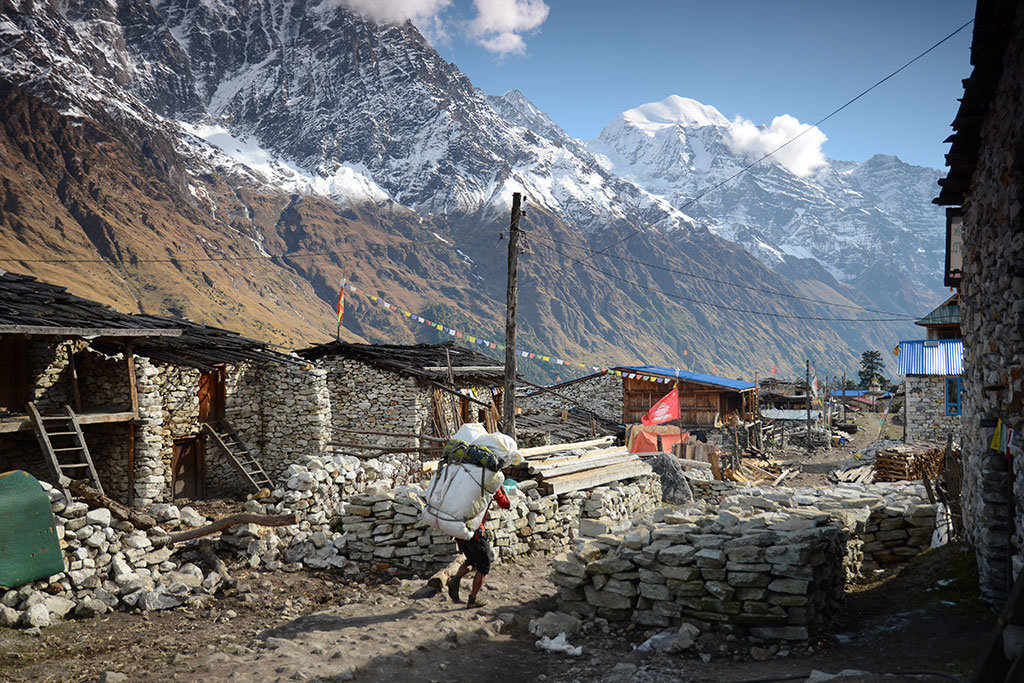
How have the local communities responded to your efforts in opening up the Manaslu Circuit trek and generating increased business opportunities within the region? What has been their overall sentiment towards the growing tourism industry?
The overall response from the local population has been overwhelmingly positive. The influx of trekkers and tourists has undeniably brought about a range of benefits to the region. While the tourism industry invariably creates winners and losers, the general consensus is that the positive impacts far outweigh the negative ones. Those who were already established in the lodge and guesthouse business have naturally experienced a significant increase in their earnings. These established businesses are now thriving, benefiting from a consistent stream of customers seeking accommodation and meals. Furthermore, the growth in tourism has generated a greater demand for portering and guiding services. Many individuals who were previously unemployed or underemployed have found opportunities to earn a living by assisting trekkers with their luggage and navigating the trails. The mule drivers in the region have also benefited from the increased demand for transportation services. Mules are frequently used to transport goods and supplies to the remote villages along the Manaslu Circuit, and the higher volume of goods being transported has translated into a better income for the mule drivers. The economic benefits of tourism also extend to the traders and shopkeepers in the villages along the trek. The increased number of visitors has led to a rise in sales of local products, handicrafts, and souvenirs, providing a much-needed boost to the local economy. In addition to the direct economic benefits, there is also a less visible, but equally important, impact on the community through charitable donations. Trekkers often form strong bonds with the local people they encounter during their journey, and many are inspired to contribute to the community through donations to schools, orphanages, or other charitable organizations. Some trekkers even go on to sponsor individual children, providing them with the opportunity to attend school and improve their future prospects.
Please elaborate on your involvement and work within the realm of trail running in Nepal. How did you initially become involved, and what are some of the key initiatives you have undertaken?
My involvement in trail running began initially as a personal hobby and passion. To be honest, I possessed very little knowledge about the intricacies of trail running until I stumbled upon a post on a mailing list. The post advertised a 70km race taking place near Pokhara, specifically the Annapurna 100. Intrigued by the challenge, I decided to investigate further. I had the opportunity to meet the individual who was spearheading the effort to transform the Annapurna 100 from a traditional road race into a more challenging and scenic trail race. Inspired by his vision, I decided to embark on a personal training regimen to prepare for the race. The initial spark of interest soon evolved into countless discussions and debates about the untapped potential of local elite runners in Nepal and the country’s remarkable suitability as a premier destination for trail running enthusiasts. Fueled by these conversations, we made the decision to establish Trail Running Nepal, a dedicated online portal that would serve as a central hub for information, resources, and community engagement for trail runners in Nepal. The primary goal of Trail Running Nepal was to promote the sport, connect runners, and showcase the incredible trails and landscapes that Nepal has to offer. In addition to creating the online platform, we also began organizing a series of local trail running events. These events were designed to be accessible to runners of all skill levels, from beginners to experienced athletes. We also worked diligently to secure sponsorships that would enable talented Nepali runners to participate in races overseas, providing them with the opportunity to compete on a global stage and gain valuable experience. This commitment to supporting Nepali runners has continued for more than five years, and we have witnessed the incredible growth and development of the sport during that time.
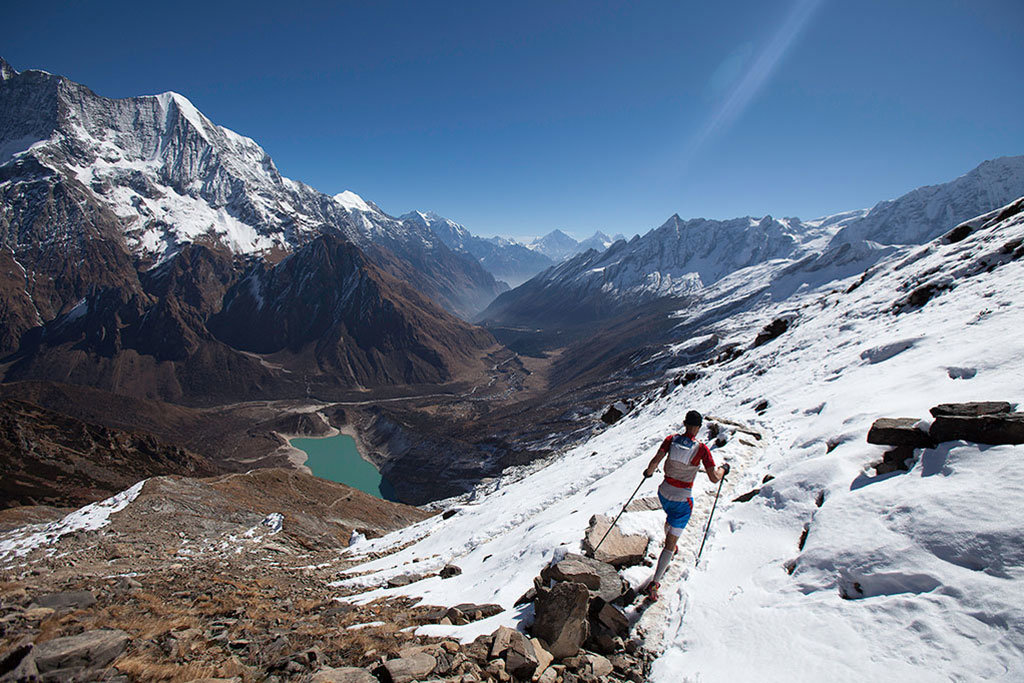
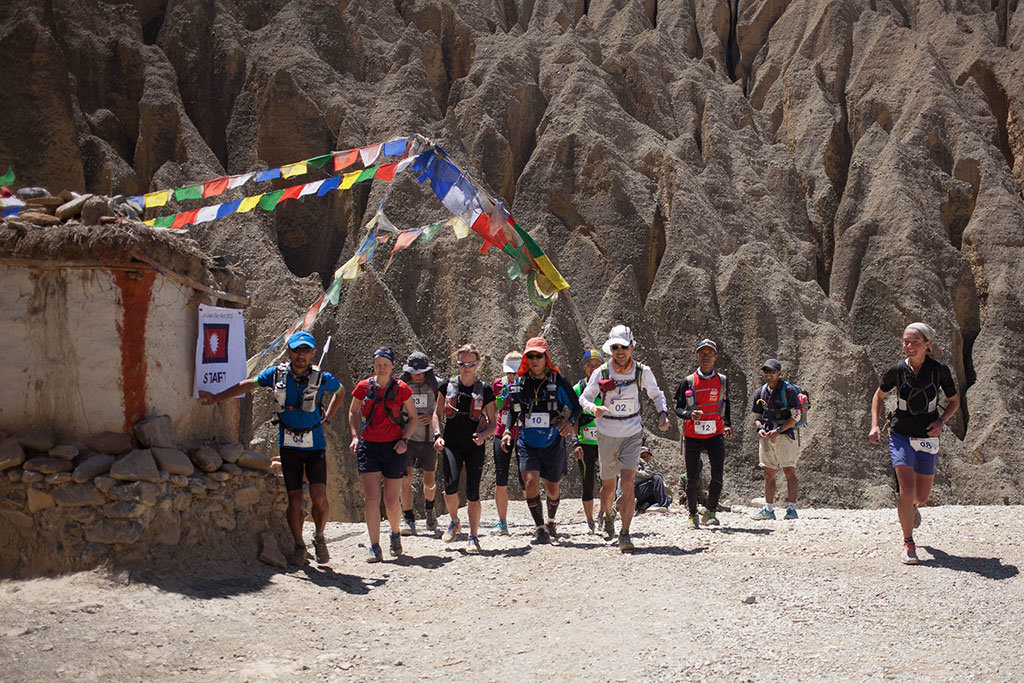
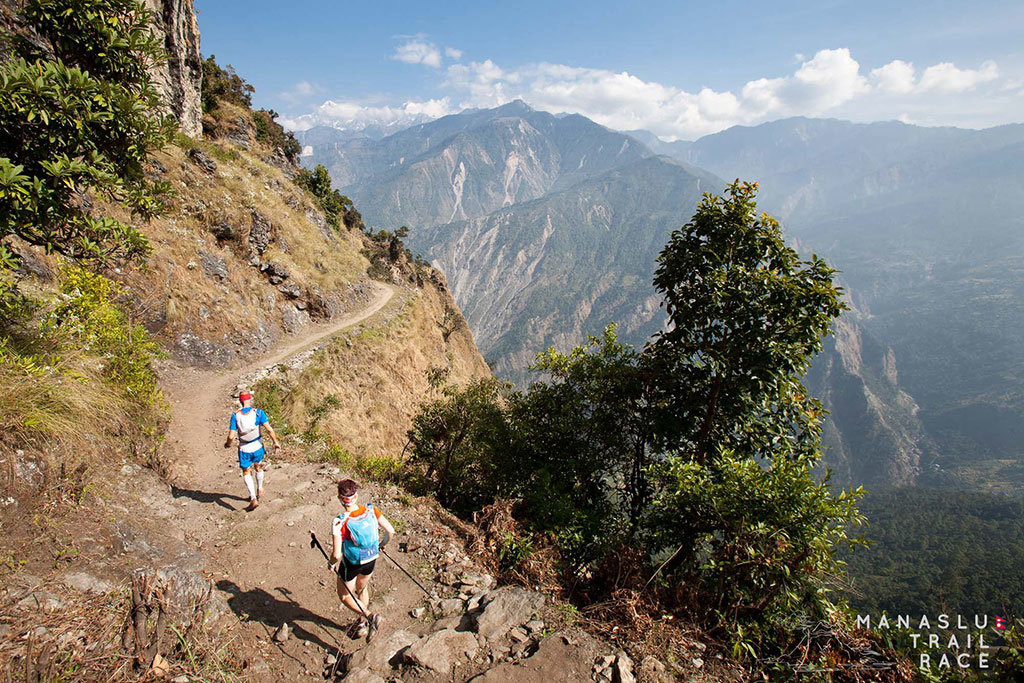
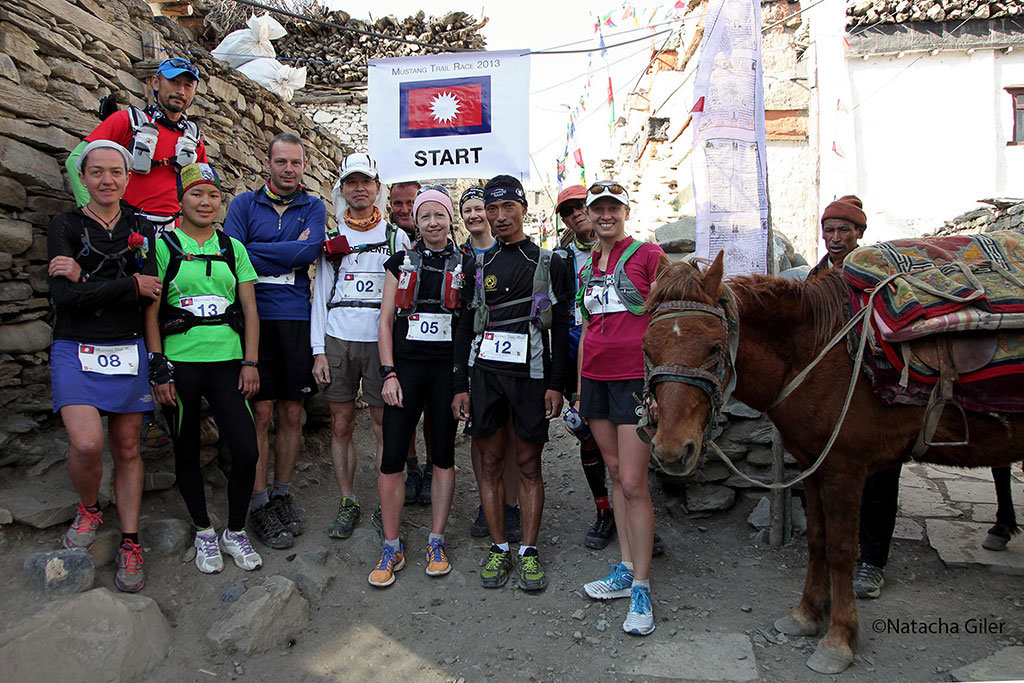
Throughout our journey in promoting trail running in Nepal, we have experienced numerous small victories and one truly remarkable and significant success story. Mira Rai, a name now synonymous with Nepali trail running excellence, appeared at one of our races approximately two years ago, almost entirely by chance. Her natural talent and determination were immediately apparent, and she went on to achieve incredible feats, including securing second place in the prestigious World Skyrunning Championships, a renowned series of ultra trail races held across the globe.
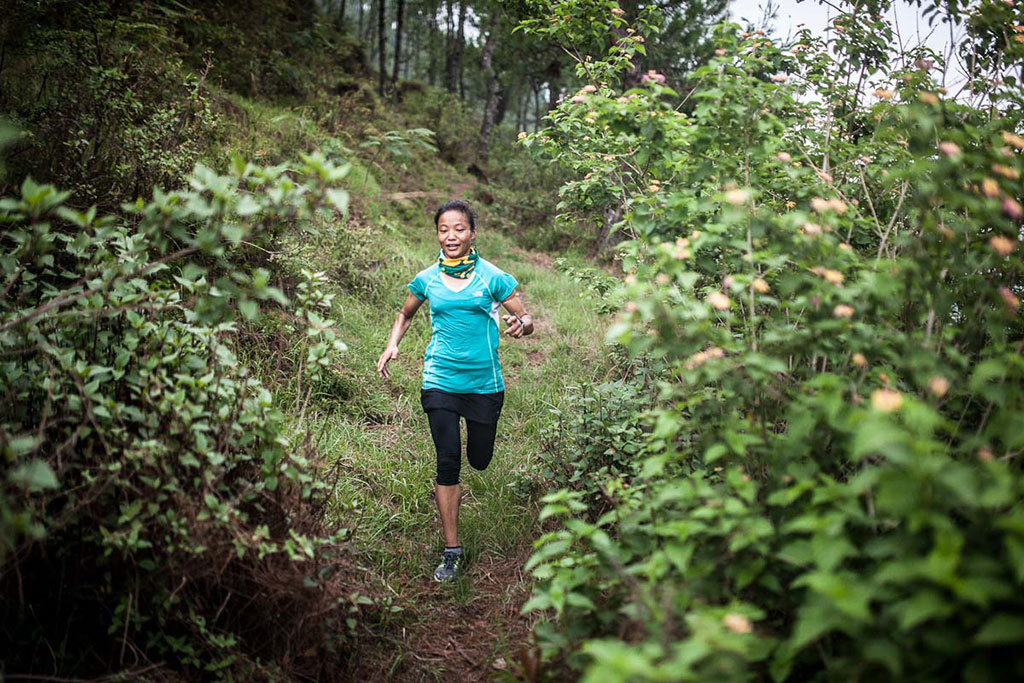
When do you believe trail running truly began to take root and flourish in Nepal, and what factors do you attribute to its emergence? Are you witnessing an increase in the number of people from various corners of the world being drawn to the unique appeal of trail running in Nepal? How are the local communities responding to this growing trend?
The growth of trail running in Nepal has been a gradual, yet steadily accelerating, process. Slowly, but surely, we are witnessing a positive trend. There is a growing selection of races being organized, catering to a wider range of skill levels and distances. Furthermore, there is a burgeoning local community of runners, particularly in and around Kathmandu, who are passionate about the sport and dedicated to pushing their limits. The popularity of trail running is also on the rise in neighboring countries, such as Thailand and Malaysia. As a result, runners from these regions are increasingly choosing Nepal as a destination for short races and training camps, recognizing the country’s unique terrain and challenging trails. While Nepal remains a relatively remote destination compared to major trail running hubs around the world, the sport is definitely gaining traction. The recent media attention surrounding Mira Rai and her remarkable achievements has also played a significant role in raising awareness and inspiring a new generation of runners. However, participation in sports outside of the traditional school-aged demographic is still relatively low, so there is still considerable room for growth. The local communities are generally receptive to the growth of trail running, recognizing the potential benefits it can bring in terms of economic development and tourism revenue. However, it is important to ensure that the growth of the sport is sustainable and that it respects the local culture and environment. Education and awareness programs are crucial to ensure that both runners and local communities understand the importance of responsible tourism and environmental stewardship.

What expert advice would you offer to individuals who are considering embarking on a trek in the Manaslu region? Beyond the well-trodden trekking paths, what other lesser-known activities or hidden gems would you recommend to visitors seeking a more authentic and off-the-beaten-path experience in the area?
My most important piece of advice for anyone planning to trek in the Manaslu region is to prioritize your physical fitness. The Manaslu Circuit trek is a challenging undertaking that requires a good level of cardiovascular fitness and leg strength. Incorporate regular exercise into your routine leading up to the trek, focusing on activities such as walking, running, hiking, and stair climbing. If possible, try to simulate the conditions you will encounter on the trek by hiking with a weighted backpack on uneven terrain. If you know that your ankles are prone to weakness or instability, I strongly recommend incorporating exercises to strengthen them. A simple and effective exercise is to practice standing on one leg for a minute, alternating between legs, with your eyes closed. This exercise helps to train your ankles to react more quickly if they roll on uneven ground, improves your balance, and strengthens the surrounding muscles and ligaments. This kind of preparation can be invaluable in preventing injuries on the trail.
Furthermore, I would strongly encourage you to consider hiring a porter for your trek. Not only will this make your experience more enjoyable and comfortable, but it will also provide a valuable source of income for a local family. Portering is a physically demanding job, but it pays relatively well in comparison to other available employment opportunities in the region. The money earned by porters is often used to cover essential expenses such as school fees, medical care, and food. By hiring a porter, you are directly contributing to the well-being and economic stability of a family in a region where such opportunities are scarce.
Hiring a porter will also free you up to fully appreciate the beauty and cultural richness of the Manaslu region. Carrying a heavy backpack can be exhausting and can detract from your ability to enjoy the scenery and interact with the local people. Imagine trying to complete a 30-minute climb to a remote monastery with 15kg on your back – it would be a far less enjoyable experience than if you were unencumbered. While your porter is walking slowly and steadily towards the agreed-upon night stop, you can use the extra energy you would have expended carrying your pack to explore the local villages, take side trips to hidden temples, or simply relax and soak in the breathtaking views. Pungyen Gompa is a prime example of a hidden gem that many trekkers miss due to time constraints or lack of energy. It is an absolutely stunning monastery located off the main trail, offering incredible views of the surrounding mountains. Make sure you make the effort to visit Pungyen Gompa and allow yourself to be dwarfed by the awe-inspiring east face of Manaslu.
Finally, I would highly recommend that you take the time to experience the vibrant culture of Kathmandu. While in Kathmandu, make an effort to wake up before sunrise at least once to visit Swayambhu, also known as the Monkey Temple, or any of the other major temples in the city. The early morning hours are when the temples come alive with activity, as the morning worship rituals begin. You will have the opportunity to witness the local people engaging in prayer, chanting, and offering ceremonies, providing a unique and authentic cultural experience. The atmosphere is particularly special in the early morning light, before the crowds arrive. And if you find yourself feeling tired after your early morning adventure, you can always catch up on your sleep later in the day.

B-1802

